ARM Holdings admits that large-scale deployments of servers based on chips powered by its technologies will start only in 2016 or 2017. But while there are almost no commercial ARM servers today, the company is increasing its target market share for 2020. In fact, ARM hopes that in five years from now one server out of four will use processors featuring its architecture.
“Last time we talked to you, we said we were shooting for 20 per cent of the server market by 2020, today we are increasing that,” said Pete Hutton, executive vice president of product development at ARM, during ARM Holdings’ analyst and investor day. “With the success we have had in this space, with the customers that are rolling out our products and with the ecosystem investments that we are making, we are going for 25 per cent target share in 2020.”
ARM is working with developers of microprocessors to design server-class chips with 8 – 48 64-bit ARMv8-A cores as well as with designers of software to address storage, cloud, web servers, Big Data/scale-out and some other servers. In fact, there are four institutions evaluating ARMv8-A technology for high-performance computing applications now and there are companies, who intend to use ARM for rather demanding tasks.
“We have initial deployments in storage, we have initial deployments in clouds, we have initial deployments in HPC, it is great, we are very happy with how that is rolling out,” said Mr. Hutton. “We are investing further. No part of the market is now restricted to us. The ARM partnership is going after every single bit of that $20 billion [total available market for servers].”
The company is expected to introduce its higher-performing code-named “Ares” and “Prometheus” cores in the coming years, which will significantly expand opportunities for ARM in servers. The designer of processing technologies hopes that partners will introduce central processing units with more than 48 cores and specific functionality, which will help to address real-time analytics servers, high-performance computing and even enterprise servers later this decade. In fact, ARM wants to offer competitors not only for Intel Xeon E5, but also for Intel Xeon E7 platforms. What is surprising is that there are those, who are already evaluating ARM technology for enterprise-class servers.
“In the enterprise, we have a lot of enterprises that are starting to evaluate the technology internally,” said the vice president of ARM.
This year Advanced Micro Devices, Applied Micro, Cavium, Marvell Technology Group, Texas Instruments, and Annapurna Labs are expected to start commercial shipments of ARMv8-based server-class system-on-chips. Next year four more companies are projected to offer their server-class solutions featuring ARM technology. Keeping in mind that all of these companies potentially have clients to use their SoCs, ARM hopes that adoption of its cores for servers will be pretty fast.
“There are six chip vendors in production [of ARMv8-A-based server chips] already this year, we have at least four more expected in 2016,” said Mr. Hutton. “The ARM server silicon ecosystem is very healthy.”
ARM is actively working with chip designers and contract makers of semiconductors to develop specific solutions for servers. In particular, the company is creating customized physical blocks, including microprocessor cores and interconnect technologies, to be used in server-class SoCs. ARM’s server chip roadmap includes solutions to be made using 14nm/16nm, 10nm and even 7nm FinFET fabrication processes.
At present, only Ubuntu Server Linux supports ARMv8-A server processors, but ARM hopes that the number of operating systems and applications compatible with its architecture will rapidly increase in the coming years.
“There is a large number of additional OSes, which are at the development stage,” noted the EVP.
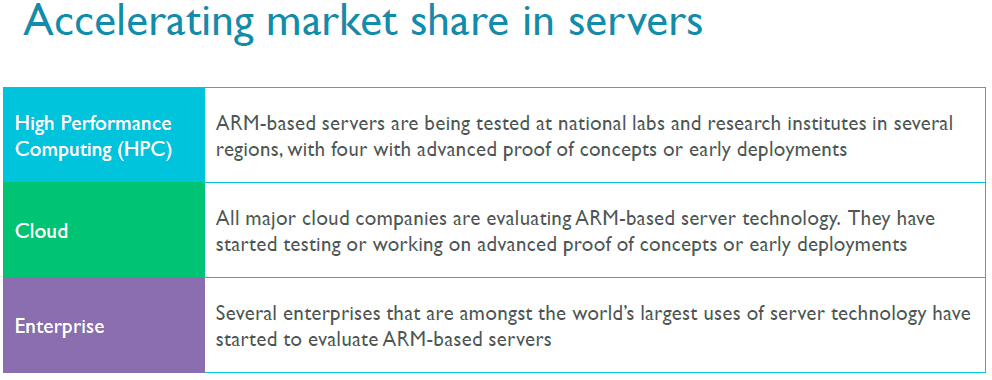
ARM is traditionally very optimistic about its prospects in the server market. The company has reasons for some optimism: there are six server-class ARMv8-based chips, there is one ARMv8-supporting server operating system, there are many companies and institutions, who are evaluating the technology. But will ARMv8-compatible processor be 25 per cent of servers in just five years?
In fact, it took AMD Opteron over three years to grab about 30 per cent of the x86 server market from Intel Xeon. AMD’s chips back in 2003 – 2006 were actually faster than Intel’s and software ecosystem support for Opteron processors was robust. ARM hopes to take 25 per cent away from Intel in five years without software and major performance benefits. That’s a bold plan! Only time will tell whether it will succeed.
Even at its analyst conference ARM did not reveal specifications of its rumoured “Ares” and “Prometheus” cores.
Discuss on our Facebook page, HERE.
KitGuru Says: Will servers powered by ARMv8 chips be competitive against Intel Xeon servers due to be released tomorrow and the day after tomorrow? Intel is not standing still and it has a lot of resources to develop unbeatable server platforms. Moreover, it has a lot more financial resources than any of ARM’s partners. While ARM’s server plans seem to be optimistic, they just do not seem to be realistic.
 KitGuru KitGuru.net – Tech News | Hardware News | Hardware Reviews | IOS | Mobile | Gaming | Graphics Cards
KitGuru KitGuru.net – Tech News | Hardware News | Hardware Reviews | IOS | Mobile | Gaming | Graphics Cards


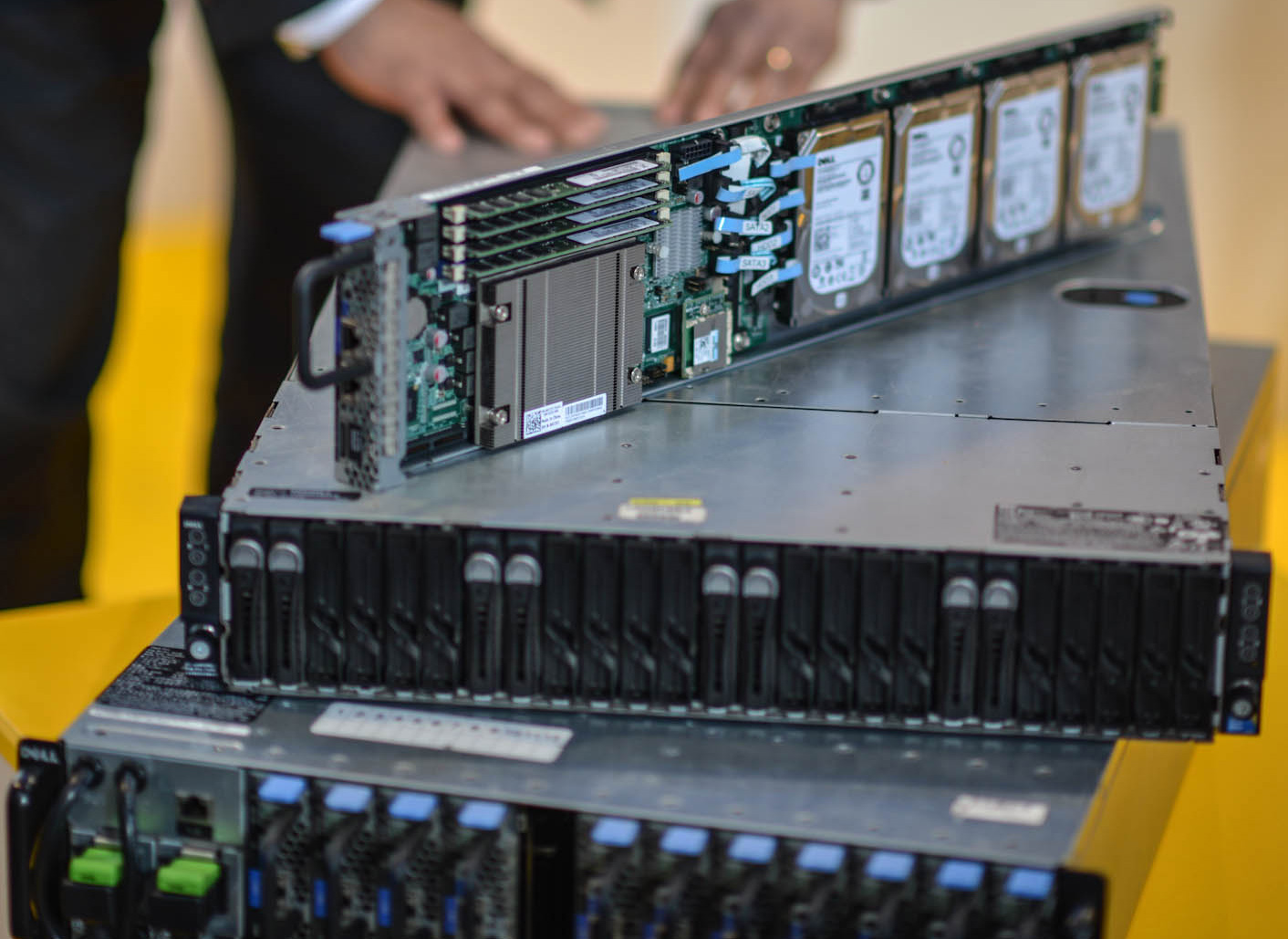
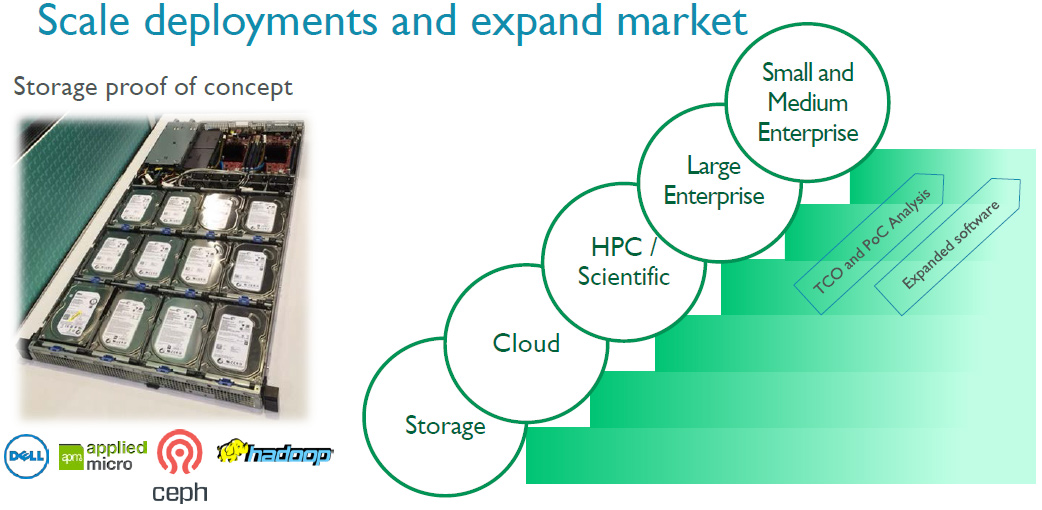
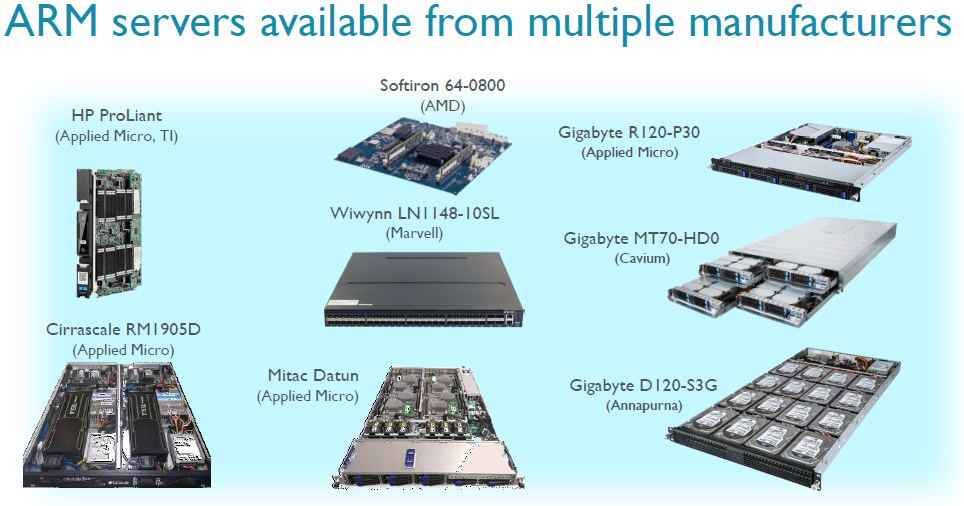
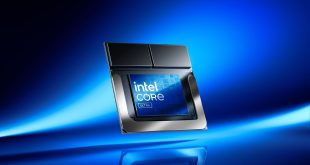
ARM’s really only useful for networking switches. Avoton and Xeon D basically eradicated ARM’s inclinations in the dense server world.
using TSMC 10nm node it will be very much possible for ARM to fab a cpu having 160 cores+80mb L2 cache within 300mm^2 diesize(ideal for data center) , such cpu will blow ny compition from intel but one thing ARM still needs i.e. interconnects….currently ARM is working with AMD on coherent interconnects, so yes they hv lot of potential…….intel pricing is just ridiculous.
just think wat will happen when qualcomm,samsung, Mediatek, Huawei etc. will release server cpu,,,,,,,,, fierce competition will drive cost down.
AMD ? Will they do ARM ? They have Jim Keller ri8 ?
Buddy, actually u asked lil bit tricky que.-
1. it was Jim kellar who made astonishing cyclone core (iphone 5S) which hv IPC of nearly 4.5 nd just for ur reference intel haswell has IPC more than 3 while amd bulldozer is at 1.8 (lil bit more than atom) .
since Jim kellar working with ARM from long time so he got perfection in both designs.
2. amd delayed jim kellar developed K12(custom ARMv8x server core) 1 year behind of zen just coz of one major reason i.e. amd want to see how zen performs,, if zen becomes a worthy competitor then amd will not going to make K12 a powerful killer core …..on other side if zen fails to deliver decent compilation then amd will go to lab nd will release best possible K12 core …then finally amd will be major ARM player.
3. it takes more than 1 billion$ nd nearly 20 months to develop whole new X86 arch, while new arch on ARM takes just 6-8 months nd less than 400 million $. …..so amd playing K12 card very well.
4. at last, i personally think zen wont be a garbage coz amd’s new coherent data fabric interconnect is specially tailored for MCM package which simply means amd zen is a decent performer coz if zen also a failure then amd never develop such useless interconnect ……….(amd currently has zen working in labs, actually every company has future design which they launch after 3-4 year,,, on newer node+ more polished version).
so yes zen will be decent performer nd K12 will be just decent,K12 will live in shadow of zen coz X86 market has huge margins…. just 2 players while ARM design means “PERFORM OR PERISH” nd amd is not that fool.
hope i answered ur que… 😀
Thanks man,I appiciate that.Zen is NOT going to be a Failure.Comeon,Thats Jim Kellers work there 🙂 As far as I know,Jim left Apple after he finished his work on the iPhone 4S CPU and as we all know,It is powerful enough to still get supported in iOS 9.He had given Ideas on for the 5S CPU but never worked with them.He also worked on Apple’s Swift.But geah,ARM is the future and o dont care about Consoles.All I can see is AMD ruling 2016 with HBM2 and 16nm GPUs first before Nvdeadia.
It is easy to make glossy announcements on the future (many years ahead) but reality-wise a different picture. We have not even seen any 14nm FinFET ARM-based server chips currently in production either. Talking about even smaller nodes (which have not became reality yet), their costs are going to be even more expensive. And where is AMD’s Seattle? There isn’t any available from Softiron either http://www.softiron.co.uk/products/ although was previously announced as far back as July http://www.softiron.co.uk/news The main problem is the (microserver) market demand is not viable yet, and gets overlooked due to the current widely and easily available commoditised x86 server options…
>> In fact, it took AMD Opteron over three years to grab about 30 per cent of the x86 server market from Intel Xeon. AMD’s chips back in 2003 – 2006 were actually faster than Intel’s and software ecosystem support for Opteron processors was robust.
And there lies the rub. Intel has formed this cartel with OEMs like Dell, HP and Lenovo which is almost impossible to break. Even when AMD had a 64 bit opteron and intel was selling rebadged 32 bit P4s as “Xeons” (which probably most wet intel fanboys do not know) , intel had more than 90% market share with the big ‘dealers’. AMD only managed 30% of overall server market because of 2nd tier and white box server manufacturers. These companies became suppliers to hosting providers and SMB servers. In fact many people build their own rig, usually with AMD hardware.
Those 2nd tier and white box makers are all but gone (bought, defunct or bribed by intel for e.g. rack space which was a big consumer of AMD suddenly went all intel). So it is an all intel world and intel has used that consequence of its business practices to market itself as the sole viable supplier by virtue of its having far superior products. Even if that WERE true, 80% of enterprise server needs can be met by AMD’s hardware from 5 years ago !
So, at least in the enterprise server market, ARM will have to wrestle with this choke hold that intel has and one which cannot be won over merely with innovation and design.
Keller has left AMD! Source: http://www.bloomberg.com/news/articles/2015-09-18/amd-chief-architect-keller-leaves-to-pursue-other-opportunities?cmpid=yhoo That could very well have meant that K12 may end up abandoned…
Latest news, Jim Keller has left AMD! Source http://www.bloomberg.com/news/articles/2015-09-18/amd-chief-architect-keller-leaves-to-pursue-other-opportunities?cmpid=yhoo That would certainly meant that AMD’s future K12 ARM based server chips may not materialize after all…
WTF ?! I hope he had finished working on the Zen Series.
AMD only mentioned Zen but nothing about K12 regarding Jim Keller’s departure. Also that “roadmaps” (which one?) remained the “same”. Referring back to this article http://www.slashgear.com/amd-chip-guru-jim-keller-arm-left-team-a-little-daunted-05327681/ shows that current AMD engineers still have some learning to catch up on integrating ARM architectures. With Jim Keller gone, K12 project could be in limbo…
All new paying Career: Make $97 Just In One Hour……….Afterg an average of 19952 Dollars monthly,I’m finally getting 97 Dollars an hour,just working 4-5 hours daily online.….. Weekly paycheck… Bonus opportunities…earn upto $16k to $19k /a month… Just few hours of your free time, any kind of computer, elementary understanding of web and stable connection is what is required…….HERE I STARTED…look over here
—-umy…
➤➤➤➤ http://GoogleTopPayJobsNetworkOnlineCenters/$98hourlywork…. =======================================================
The ideal size for a chip is the size that gives the manufacturer the most money. Or, the minimum die size that maximizes the profit margin while minimizing the R&D the company must have.
For Samsung and TSMC 14/16nm I think that’s under 150mm^2 based on what little I know about yields and implementations of the processes. I don’t think that 10nm from anyone besides MAYBE Intel will be suitable for anything over 200mm^2 until 2020 at best.
Excluding chips where yield cost is trival. Which isn’t enough of the server market to warrant even a fraction of the percentage.
AMD is doing ARM. At least as far as we know.
Jim Keller has departed AMD and his leaving party should be happening soon from what I hear
microarchitecture is a 3-5 year project. When Jim came back to AMD Zen was already started, he probably changed stuff.
K12 at this point should be about ready to layout and such.
Another point for K12/Zen is the original goal was to have the chips be very similar except for the ISA. Given that Zen is finished and laid out than K12 should mostly be changing what was needed for x86 to what is needed for ARM.
It is entirely possible (I think unlikely) that K12 only needs layout and than send for tape out.
1- Haswell is a higher IPC than anything Apple has made*. (*=unsure how much A9 improves IPC, entirely possible it is perfectly equal or higher). This does seem to be most accurate statement you make amazingly.
2. AMD delayed Zen because there is little demand for ARM. And x86 is more important for AMD. And because AMD doesn’t have money to safely fund both projects for same launch. It was a money game. By the time K12 is finalized Zen won’t even be debugged, if even taped out. Absolutely no reason to wait for Zen. This is just BS you state,
3. Hahah. Hahah. I suppose if your development excludes lay out, tape out, debug, etc. and also some conceptual stuff that could be true for x86. As for ARM. You can design a chip in 6-8 months and far under 400 million dollars. Do you want something high IPC and high frequency (IE. targeting 3.5-4.5 for most bins as opposed to much of ARM is sub 2.5Ghz) and decent power? You’re going to spend quite a bit more. Apple spent well over 1.5B for their first ARM custom core excluding licensing fees. More and more BS. Yay?
4. flashback 15 years: I personally think Pentium 4 won’t be garbage because it’s targeted at reaching super high frequency to gain its performance. If Pentium 4 is a failure than Intel never developers high frequency parts. And a ending “()” part that isn’t BS foir once.
5. (not really 5 by you, but, it’s the fifth goal/part): AMD is not specifically designing its current parts for next gen console design. Next generation of consoles will either be a marginal upgrade once 14/16nm 200mm^2 parts are reasonable (shrink current consoles and apply 50% clockspeed boost to CPU and 25%+ to GPU) or are going to be after 2020. At which point there will be more than enough time for AMD to customize a Zen/K12/Cheetah/Tiger or a Zen+/K12+/Cheetah+/Tiger+ for said console(s).
6. (to about performance of chips): How Zen/K12 performs next to each other mean nothing to the market. K12 will be the most important ARM design in the 201x years I think. A player who has experience with server market making an ARM core aimed at the server market.
Sorry if weird comments. posted after drinking half a bottle of wine. Which, for a sauv blanc wasn’t to bad. Certainly better than I expected at the price.
Keller is one engineer. He can do his job as the lead of the project perfectly fine and the final product can suck.
Bulldozer was designed to cut 10% IPC for 25%+ frequency at the same power (for ~100W used). The reason it fell flat on it’s face was that the process and such wasn’t what was expected.
Zen can be perfectly imaged and designed and the node it’s ready for could be a node that causes unforseen issues. Keller is a smart man with good experience. Not a god-like being.
real volume not Samsung/Apple volume of 14/16nm chips should start towards the end of this year.
Samsung only gets away as they own the fabs and Apple because Apple is basically saying “do it or you don’t get us at all”.
Seattle was delayed and is moving slow volumes.
Expect ARM to start it’s serious showing in late 2016 at best, mid-2017 more realistic. I find this 25% goal insane. 10% is what I see, 15% being super optimistic.
Uh. ARMv8 parts have shown to have better pref/watt at about the same pref/watt levels while using a process far cheaper than Intel’s compared to Intel.
Now, the only company to achieve that I don’t think will sell to servers.
Also the flood of custom ARM parts aimed at servers from established players who have great support (based on current/past shipping products) haven’t made their products to market as they are on 14nm.
Intel on 14nm power/performance characteristics can compete with 28nm ARM. Can it compete with 14nm characteristics ARM? That remains to be seen. I think they’ll do well enough and the ARM players won’t provide the validation/support necessary to make the lower cost worth it.
who cares about saving 100,000 off 1,000,000 in servers if you spend 20,000,000 writing code? Well, obviously people will, but, include that the cheaper option has less support and ecosystem. Not looking very good.
Actually, during this period AMD had a larger marketshare over the most lucrative parts of the market than Intel had.
When Intel/AMD is selling parts with 1000%+ margins and the OEM selling that part has 100%+ margin there isn’t any bribing Intel could realistically do. 8P and 4P AMD got way over 30% way sooner than 2006.